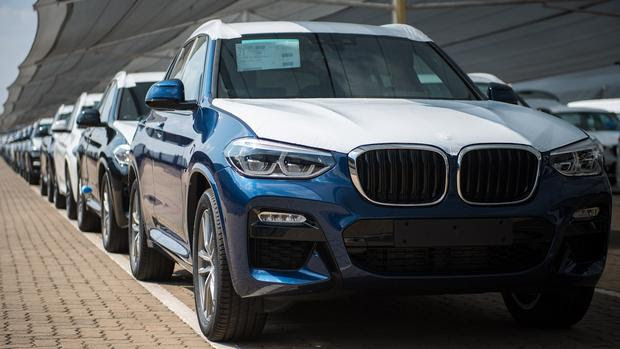Independent Online South Africa
Roy Cokayne
A batch of South African-built BMW X3s awaiting export to Europe. Picture: BMW SA
Johannesburg – South Africa’s automotive industry achieved total export sales of vehicles and components worth R164.9 billion in 2017, which represented almost 14 percent of total South African exports.
This enabled the domestic automotive industry to register its third consecutive annual trade surplus at R10.3 billion despite a 3.6 percent decline in the total export value from R171.1 billion in 2016.
National Association of Automobile Manufacturers of South Africa and Automotive Industry Export Council executive manager Norman Lamprecht said on Friday the timing of new model launches towards the end of 2017 also impacted on vehicle exports, which declined by three percent to 338 093 in 2017 from the record 344 821 exported in 2016.
But Lamprecht, who was speaking at the launch of the 2018 Automotive Export Manual that he produces, said this figure still comprised the third highest export level on record.
Morocco produced 345 000 passenger cars in 2017, compared to the 331 000 produced in South Africa, to overtake the domestic industry and become the largest producer of passenger vehicles on the African continent for the first time.
But Lamprecht did not believe Morocco posed a threat to South Africa’s automotive industry because it was about 16km from Europe and focused on that market rather than sub-Saharan Africa.
Global footprint
Lamprecht said the South African automotive industry continued to strengthen its global export footprint. The number of export destinations with export values in excess of R1 million declined to 149 in 2017 from 154 in 2016, but 22 countries recorded export values in excess of R1 billion and 68 countries in excess of R100 million.
Germany at R46.7 billion followed by the US at R18.8 billion were the South African automotive industry’s top export markets. He said Africa remained a priority focus for the South African automotive industry and highlighted the enormous potential for growing vehicle demand in Africa.
Automotive exports to 40 African countries amounted to R29.7 billion or 18 percent of the country’s total automotive exports of R164.9 billion in 2017. But Lamprecht said the motorisation rate at 42 per 1000 persons, compared to the global average of 180 vehicles per 1000 persons, remained the lowest in the world.
“Considering a population of more than 1.2 billion and a burgeoning middle class, there is enormous potential for growing vehicle demand on the continent.
“We exported 22 000 vehicles to Africa last year. Five years ago we sold 80 000 vehicles, but we no longer have any exports of the doubling of import duties in Nigeria and import regulations in Algeria.
“But 22 000 vehicles out of one million vehicles sold in Africa is two percent. If we can increase that to 10 percent you go to 220 000 vehicles,” he said.
Lamprecht said regional integration would unlock intra-Africa trade, better customs co-operation between countries, the elimination of tariff and non-tariff barriers, and the improvement of investments on the back of economies of scale.
Catalyst
Naamsa director Nico Vermeulen said the catalyst for the industry’s extraordinary export performance had been the Motor Industry Development Programme introduced in September 1995 and its successor, the Automotive Production and Development Programme introduced in 2015.
Vermeulen said that the post 2020 programme had not yet been finalised, but stressed that to sustain the industry’s remarkable and extraordinary export track, it was absolutely imperative it continued to enjoy globally competitive levels of incentives and support.
“If that is not the case, we will start losing to the likes of Morocco,” he said.







